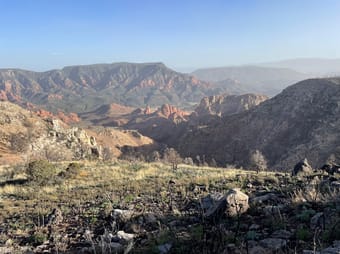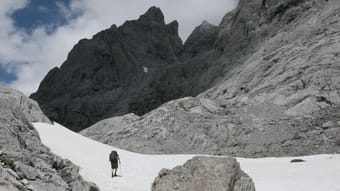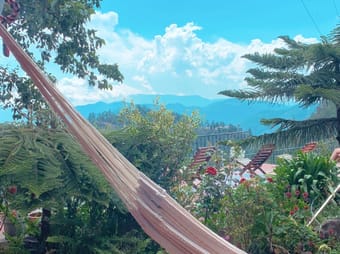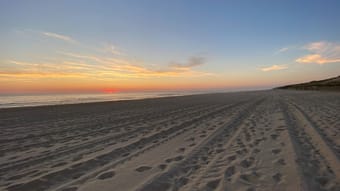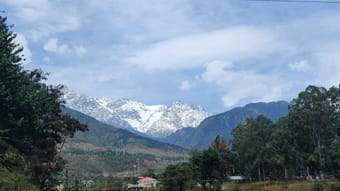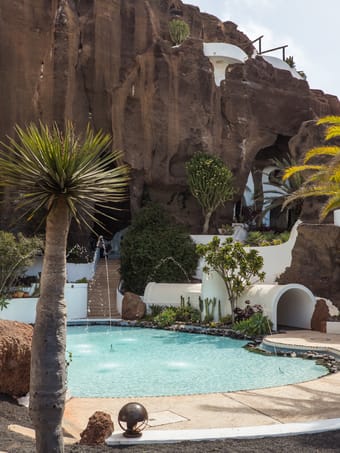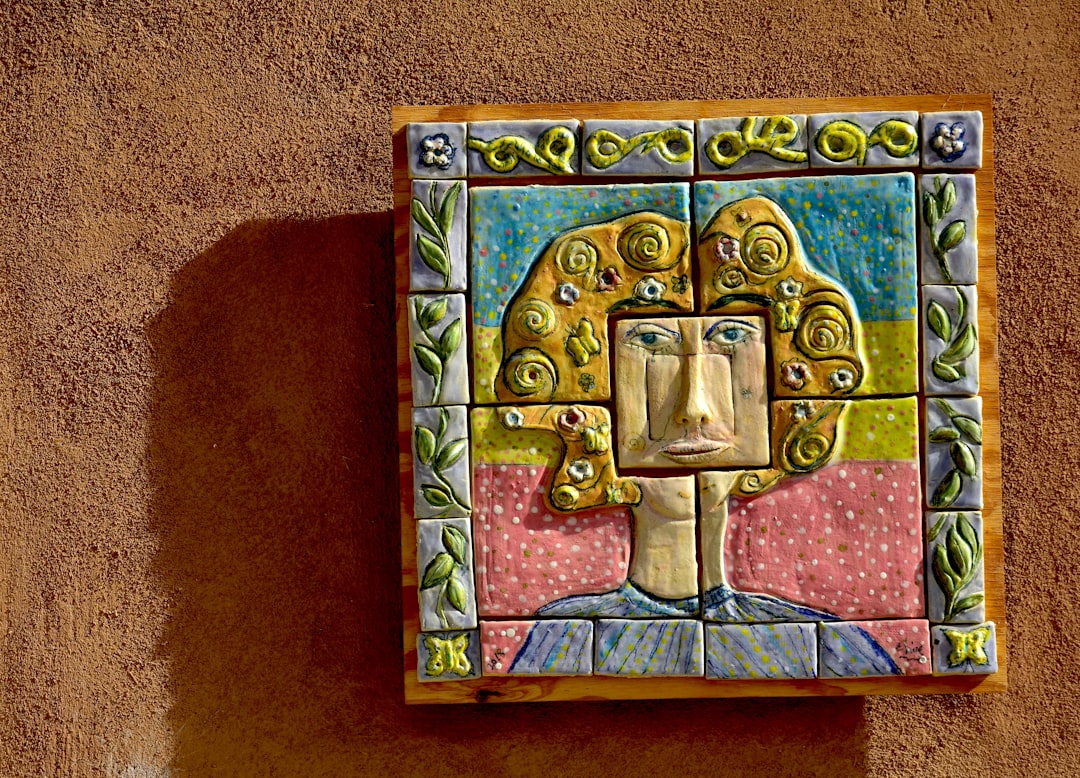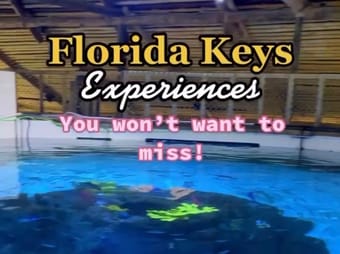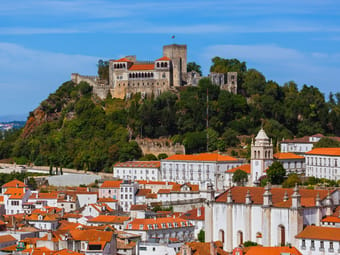Results for La Pine
Great places to eat and things to do and places to see by the Pineapple Queen and locals. This list is created both from locals as well as personal expierences. Enjoy!
Solo Female • Couples • Groups • Foodie • History • Beach • Mountain • Camping • People & Culture • Photography • Roadtrip • Coffee • Relaxation
Free
1
In this episode of venture4wd, we are based outside of Sedona, Arizona. I take the Land Rover deep into the backcountry to do some exploring away from the popular tourist areas. There, I experience spectacular landscapes among red rocks and ponderosa pines. This board contains points-of-interest and mixed media from our travels relating to V15E12.
Couples • Nature • Adventure • Camping • Coffee
Free
5
Seven-day trek based in refugios.
INTRODUCTION
The Picos de Europa is a region of limestone peaks reaching over 2500 metres above sea level; the highest being Torre de Cerredo at 2650 metres. The route described here is one that I hiked alone in early summer. The best time to tackle the route is between June and September. There is more likely to be snow on the high passes in early June but they are usually not to difficult to negotiate.
The Picos de Europa is not as well known as the Pyrenees or Alps and as such the hiker traffic is less and the tourist infrastructure is less developed. This makes the area feel less spoilt but it can also make it a more challenging area to explore with fewer trails and little to no signposting. Always take a map with you: the Editorial Alpina 1:25,000 maps are the best. I took these and also used the outdooractive app and downloaded the relevant map tiles. This is useful for pinpointing where you are, in what can be confusing terrain. I was lucky to have clear weather for my entire trek but I would imagine that it's pretty difficult to navigate when the cloud is down on the mountains so take a compass too.
You can stay in refugios every night on this hike and wild camping is permitted above 1500m; details below.
I can't recommend the Picos de Europa as a hiking destination enough. The mountains are magnificent but there are also beautiful extensive woodlands at lower altitudes, as well as meadows full of wildflowers and butterflies. The juxtaposition between the stark limestone peaks and the gentle greenery of the valleys is beguiling.
DISCLAIMER: Please note that hiking in the Picos de Europa is not risk free. It is a very challenging area in which to hike. I accept no responsibility for any accidents you may experience while hiking this route. You are responsible for your own safety. Some of the dangers and difficulties are listed a little further down this guide.
HOW BUSY?
Unlike some of the more well know hikes around Europe this trail is less well trodden and as such the trail can be quite hard to follow at times, and at other times there is no trail! Despite this, refugios, being small, fill up fast (see below).
REFUGIOS
The hike is made easier if you stay in the staffed refugios where you can recharge your metaphorical batteries. Accommodation at these mountain huts is in communal dormitories and you will need to bring your own sleeping bag. It's best to book ahead as they are often full throughout the summer. Prices are around the €12-17 mark and they also do affordable meals (breakfast, picnic lunch and dinner).
There is also a handful of unstaffed, very basic mountain shelters with no services and no beds but these can be a good option in an emergency. Most of the refugios only accept cash so be sure to take plenty with you before you set off as there are no ATMs! All the refugios on the route are listed in the route description below with website links.
WILD CAMPING
Camping is only permitted at 1500m above sea level or higher. There is not much water anywhere above this altitude so be sure to fill up when you get the chance (at refugios) before camping in a remote spot.
POSADA DE VALDEON
This beautiful village tucked in the valley between the Macizo Central and Macizo Occidental is a lovely place to wander for a few hours. At the centre of the village there are a number of restaurants and bars and a small square with a water fountain. If you need somewhere to stay before or after the trek you'll find hotels, guest houses and a youth hostel. There is a hotel recommendation and link in the route description.
In the centre of the village is a pharmacy should you need any blister plasters! And on the road to the west of the village is the National Park office where you can find information about hiking and anything else to do with the national park.
GETTING THERE
From the UK there are Ryanair flights to Oviedo (Asturias airport) from London Stansted. A bit further afield you can get flights to Bilbao and Santander from the UK and the rest of Europe. Getting from the airport is a little complicated but there are buses to Posada de Valdeón from Oviedo changing in Cangas de Onis. The journey takes about 4.5hrs. There are also buses from Santander and Bilbao changing in Llanes and Riaño with the journey taking around 15hrs from Bilbao.
An easier but more expensive option is to get a taxi. You could also hire a car but of course you will have to leave the car sitting idle in Posada de Valdeón while you do the hike.
FLORA & FAUNA
This area of northern Spain is fantastic for wildlife. At lower elevations the beech and sessile oak woodland stretches for miles over rolling hills. This is part of the boreal forest that once would have covered much of Europe and is home to roe deer, wild boar, red squirrels, pine martens and brown bears.
In the skies you have a good chance of seeing griffon vultures, golden, booted and short-toed eagles, black kites and peregrines. Of the smaller passerine species the Picos are home to red-backed shrikes, black redstarts, spotted flycatchers and black woodpeckers.
But it's the wildflowers in the meadows and on the woodland edges that are the real joy and most easily appreciated. Vetches, cinquefoils and orchids create a colourful patchwork of colours with butterflies bringing the whole scene to life. Look out for swallowtails, fritillaries and hairstreaks.
NAVIGATION
Navigation is difficult as the terrain can be confusing and in many places there is no trail whatsoever. Take a map (1:25K Editiorial Alpina maps are the best), compass and GPS and know how to use them. It's also a good idea to download the map on a relevant map app. I used the outdooractive app but others are available.
WEATHER
Thunderstorms are common, usually in the afternoon and these can be particularly dangerous high up in the mountains. It's best to hike early and get to a refugio by lunchtime if there are afternoon thunderstorms in the forecast. The weather in this part of Spain is very changeable as it has a maritime climate. Rain and thick fog are possible but equally long periods of warm sunshine are not unusual. The best advice I can offer is to be prepared for anything. Pack suncream and a sunhat but don't forget your waterproofs either.
FALLING ROCKS
Rock falls are not unusual as chamois and other hikers can dislodge rocks above you. Getting caught in a rockfall is not so common but not impossible. Be aware and if you see rocks heading your way, and cannot find cover, crouch down on the floor and pull your rucksack over your head and back.
DRINKING WATER
There is very little running water as these mountains are mostly comprised of permeable limestone. You will need to take plenty of water with you each day (I packed three litres every day and usually drank it all). You can fill up at the refugios and there are a few fountains / fuentes although most of the ones I saw marked on the Editorial Alpina map were dry when I found them.
THE SUN
Sunburn and sunstroke are both real dangers and there is little shade. Keep hydrated and wear a sun hat that covers your neck.
TERRAIN
In some places you need to scramble up steep rocky sections. You will need to have experience in this kind of terrain and have a head for heights! The terrain is very rocky and uneven at higher altitudes so you will need strong, sturdy footwear. Trekking poles are also invaluable in providing support and helping you across and up awkward sections. There is also a lot of steep ascent and descent on this route so you will need to be reasonably fit.
DANGEROUS ANIMALS
On many parts of the trail you will encounter cows. In my experience they are very docile and used to trekkers so they shouldn't be of any concern. You may also find flocks of sheep and while these aren't dangerous they are often accompanied by shepherd dogs which have been trained to keep intruders away from the flock. They can be quite intimidating when they start barking at you. If you see sheep ahead it is best to give them a wide berth, even if this means veering away from the trail for a while. If you walk directly towards or through a flock of sheep you risk agitating the shepherd dogs.
Bears are not common in the Picos de Europa but there are bears in other parts of the Cantabrian Mountains, notably Somiedo National Park, not far to the west, and there is always the possibility of seeing an itinerant bear wandering through the Picos. Eurasian brown bears are not as big nor aggressive as the grizzly bears of North America so you shouldn't worry too much about an encounter. It's extremely unlikely you will see one so if you do, consider yourself very lucky.
Wild boar are common in the woodlands at lower altitudes. They are not as aggressive as some people will tell you and tend to be nocturnal. I did see some in the daytime near Vegabaño. As soon as they saw me they ran away, crashing through the undergrowth. As with any large animal it's best to simply give them plenty of space to move away from you.
I hope none of this advice puts you off hiking in the Picos de Europa. Yes, it's a challenging mountain area but the rewards for hiking here are great. Enjoy the hike!
Adventure • Nature • Slow Travel • Sustainable/Eco • Mountain • Camping
$12.00
3
Oaxaca is a beautiful and diverse state in Mexico perfect for exploring out of your backpack! The city’s culture and culinary scene is unmatched, the Pacific beaches are a surfer’s paradise, and small mountain towns offer recluse in their pine trees within cloud forests.
This guide is perfect for you if:
•you want to explore all the most beautiful and iconic places in Oaxaca
•you don’t want to miss any of the amazing nature spots
•you’re primarily on a budget but willing to splurge when the food is this good
Included is:
•an ideal route to see all the best locations in a logical order
•nature spots, restaurants, hidden gems, and tips on where to stay
•notes on each location with personal tips based on my experience
To see some pictures of my recommended spots visit my Instagram @texmexplore
Happy Exploring!
$15.00
3
𝐖𝐞𝐥𝐜𝐨𝐦𝐞 𝐭𝐨 𝐒𝐤𝐨𝐩𝐞𝐥𝐨𝐬 𝐈𝐬𝐥𝐚𝐧𝐝: 𝐀 𝐇𝐢𝐝𝐝𝐞𝐧 𝐆𝐞𝐦 𝐢𝐧 𝐭𝐡𝐞 𝐀𝐞𝐠𝐞𝐚𝐧 𝐒𝐞𝐚
Nestled in the azure embrace of the Aegean Sea, Skopelos Island stands as a pristine jewel among Greece's many treasures. With its enchanting landscapes, rich history, and vibrant culture, Skopelos has long been a well-kept secret for those seeking an authentic Greek experience.
𝐀 𝐆𝐥𝐢𝐦𝐩𝐬𝐞 𝐢𝐧𝐭𝐨 𝐇𝐢𝐬𝐭𝐨𝐫𝐲:
Skopelos boasts a history as rich and colorful as its vibrant landscapes. Legend has it that the island was founded by Staphylos, the son of the wine god Dionysus, which might explain its fertile vineyards and the production of the world-renowned Skopelos wine. Over the centuries, Skopelos has been a crossroads of civilizations, from ancient Greek settlers and Roman conquerors to Byzantine influences and Venetian rule. This tapestry of history has left its mark in the form of charming villages, archaeological sites, and centuries-old monasteries.
𝐀𝐛𝐨𝐮𝐭 𝐒𝐤𝐨𝐩𝐞𝐥𝐨𝐬:
⛵ 𝑴𝒂𝒎𝒎𝒂 𝑴𝒊𝒂!: Skopelos gained worldwide fame as one of the primary filming locations for the hit movie "Mamma Mia!" Visitors can explore iconic spots like the charming church of Agios Ioannis Kastri, where Sophie's wedding took place.
🌴 𝑮𝒓𝒆𝒆𝒏 𝑷𝒂𝒓𝒂𝒅𝒊𝒔𝒆: Often referred to as the "Emerald Isle" due to its lush greenery, Skopelos is covered in pine forests, olive groves, and fruit orchards. It's a paradise for nature lovers and hikers.
🥧𝑼𝒏𝒊𝒒𝒖𝒆 𝑺𝒌𝒐𝒑𝒆𝒍𝒊𝒕𝒂𝒏 𝑪𝒉𝒆𝒆𝒔𝒆: Don't leave without trying Skopelos cheese, a delightful local specialty made from a blend of goat and sheep milk. It's a flavor you won't find anywhere else.
🐬𝑫𝒐𝒍𝒑𝒉𝒊𝒏 𝑺𝒑𝒐𝒕𝒕𝒊𝒏𝒈: Skopelos is home to a resident population of bottlenose dolphins. Take a boat tour to witness these playful creatures in their natural habitat.
🏡 𝑪𝒉𝒂𝒓𝒎𝒊𝒏𝒈 𝑽𝒊𝒍𝒍𝒂𝒈𝒆𝒔: Explore picturesque villages like Skopelos Town, Glossa, and Loutraki, each with its own unique character, traditional architecture, and friendly locals.
⛪️ 𝑨𝒈𝒊𝒐𝒔 𝑹𝒊𝒈𝒊𝒏𝒐𝒔 𝑴𝒐𝒏𝒂𝒔𝒕𝒆𝒓𝒚: Perched on a rugged hillside, this monastery offers breathtaking panoramic views and a serene atmosphere. It's a must-visit for history enthusiasts and photographers alike.
Whether you're an adventurer, a history buff, or simply seeking a tranquil escape, Skopelos Island promises an unforgettable experience.
So, pack your bags, ready your senses, and let Skopelos reveal its timeless charm to you.
Budget • Foodie • Shopping • Nature • People & Culture • Romantic • Photography • Beach • Relaxation • Adventure
$20.00
2
You can find this little slice of California just over an hour from Bordeaux. In the midst of a dense pine forest, with the Atlantic Ocean on one side and rippling lakes on the other, Lacanau-Ocean is full of things to do, eat, swim and see.
Adventure • Foodie • Nature • RV • Slow Travel • Photography • Van Life • Road Trip • Wine • Coffee • Beach • Relaxation
Free
1
Nestled amidst the lush tea gardens and pine forests of the Kangra Valley, Palampur is a hidden gem in Himachal Pradesh, offering a tranquil retreat from the hustle and bustle of city life. Known for its stunning landscapes, serene ambiance, and proximity to exciting destinations like Bir Billing and Dharamshala, Palampur is an ideal base for exploring the natural beauty and cultural richness of the region.
Female Solo • Backpacker • Couples • Digital Nomads • Budget • Art
Free
0
Explorando Lanzarote: impresionantes paisajes volcánicos, arquitectura única y comida deliciosa. Ya sea que estés planeando una escapada romántica o un viaje divertido con amigos, ¡esta guía es para ti! Recomiendo pasar al menos 5 días en la isla, ¡pero esta guía incluye actividades para más de 7 días!
📋 Esta guía incluye:
🔸 28 lugares imprescindibles para visitar con mis consejos personales
🔸 9 recomendaciones de hoteles seleccionados
🔸 Sugerencias de restaurantes y bares
🔸 Recomendaciones para el alquiler de coche
🔸 Excursiones en barco y viajes de un día a otras islas
🔸 Enlaces directos a todos los recursos del viaje
Esta es una guía en constante evolución: ¡la actualizaré continuamente a medida que reúna más información y descubra nuevos lugares, dándote acceso de por vida a todo el contenido actualizado!
Mi objetivo al crear esta guía es ayudarte a aprovechar al máximo tu visita a Lanzarote.
He incluido tanto actividades que he experimentado personalmente como aquellas que están en mi lista de deseos para futuras visitas. Con pines de ubicación y direcciones que se sincronizan directamente con Google Maps en tu teléfono, ¡estarás bien preparado para tu viaje sin pasar horas investigando! 🗺️🔍
¡Descarga la aplicación Thatch gratis para acceder fácilmente a toda la información directamente desde tu teléfono! 📱
50+ • Backpacker • Business • Couples • Digital Nomads • Family • Groups • LGBTQ+ • Female Solo • Adventure • Architecture • Boutique • Budget • Design • Foodie • History • Luxury • Outdoors • People & Culture • Photography • Relaxation • Road Trip • Romantic • Slow Travel • Wine
$15.00
0
Let me tell you, New Mexico is SO underrated. I took 6 months and traveled all over the state to experience as many hikes as possible. Who knew NM had beautiful pine trees, rivers, and yes, snowy peaks.
If you're looking for moderate to hard hikes, between 3 to 12 miles, some with a decent amount of elevation gain (900' to 2000'), take a look at this board.
Hikers • Adventure • Nature • Hiking • Mountain
$5.00
4
Your travel guide to Upper and Middle Florida Keys!
Including…
Where to Stay in Key Largo, Islamorada, and Marathon Key!
Places to Eat in Key Largo, Islamorada, and Marathon Key!
Things to do in the Key Largo, Islamorada, Marathon Key, Big Pine Key, and Summerland Key!
Things to do with kids in Key Largo, Islamorada, Marathon Key, Big Pine Key, and Summerland Key.
My travel guide includes my personal video content, tips from my personal experiences of traveling to destinations with my child, along with contact information and pertinent information about each location or destination.
This travel guide contains information about Key Largo, Islamorada, Marathon Key, Big Pine Key, and Summerland Key.
$5.00
1
Hey Babe! Thank you for choosing my shop to help you have a fantastic road trip around Cali - my home state! I always have so much fun adventuring around California, and with this guide, so will you!
You can email me any feedback regarding my guides or if you want to connect!
Please be safe on your travels and tag Ma I'm Fine in your adventures!
xoxo
lex
Instagram| @ma.im.fine
Email | contact@maimfine.com
Recommended seasons -Winter - Fall - Spring
Burney Falls
South Lake Tahoe
Mono Lake
Mammoth
Lone Pine
Death Valley
Mojave National Preserve
Joshua Tree
Joshua Tree
Sequoia National Park
Yosemite
Backpacker • Female Solo • Family • Adventure • Camping • Outdoors • Relaxation • Van Life • RV • Road Trip • Slow Travel • Photography
Free
4
Your FULL travel guide to The Florida Keys! This is a BUNDLED purchase of 2 Travel Guides!
Included in this bundle is…
1. Upper & Middle Florida Keys Gems you are Missing Out on!
2. Key West Gems you are Missing Out on!
Including…
Where to Stay in The Florida Keys!
Places to Eat in The Florida Keys!
Things to do in the The Florida Keys!
Things to do with kids in The Florida Keys!
My travel guides include my personal video content, tips from my personal experiences of traveling to destinations with my child, along with contact information and pertinent information about each location or destination.
This travel guide contains information about Key Largo, Islamorada, Marathon Key, Big Pine Key, Summerland Keyand Key West.
$7.00
1
Dzūkija is an ethnographic region of southeast Lithuania. Rich in woods, particularly, pine woods, sandy soil and inland sand dunes. The region is also rich in mushrooms and berries.
In this guide you will find many preserved traditional villages, beautiful nature and hiking trails, as well as unique stays.
$5.55
0
Some time ago I happened to read a book about the parks of Salento, the land where I was born and raised and I discovered something that I have always known and that I would like all visitors who come here to know. There is a Salento known throughout the world, that of the fabulous beaches and the blue sea, frequented by tourists especially in the summer. And there is a hidden Salento, to be visited all year round: enchanting paths among numerous protected areas, nature and history, archaeological sites, art masterpieces, artisan workshops and ancient villages, food and wine tastings, rural worlds; places to discover on foot, by bicycle or on horseback, following ancient sheep tracks or sailing along the coast. A great variety of landscapes, both marine and terrestrial, with multicolored seabeds, spectacular caves, golden sand dunes, wetlands that become true paradises for birds. And again; junipers, Mediterranean scrub, garrigue and wild orchids, Aleppo pines, holm oaks, Vallonea oaks and centuries-old olive trees in a countryside dotted with dry stone walls, pajare and fortified farmhouses.
50+ • Accessibility • Couples • Digital Nomads • Family • Gluten-free / Celiac • Groups • Halal • LGBTQ+ • Pets • Plus Size • Vegan • Female Solo • Vegetarian • Adventure • Art • Camping • Coffee • Design • Faith • Foodie • History • People & Culture • Photography • Relaxation • Road Trip • Slow Travel • Sustainable/Eco • Wellness • Wine • Van Life
$15.00
0
Play the classic courses of Hilton Head Island, including the famous Harbour Town Golf Links, the Robert Trent Jones course at Palmetto Dunes, and dine on exquisite seafood or grab the best beach bar burgers in town.
Depending on your budget, the three hotel options at the Sonesta Resort, Omni Resort, or within the Sea Pines area, a bit more expensive, is the Inn at Harbour Town.
Play golf at world-class courses, including Harbour Town Golf Links, which plays host to the RBC Heritage PGA Tour event each year, and is a classic Pete Dye design.
Depending on budgets and time, add in 18 holes at the Jones Course at Palmetto Dunes, one of the best public courses outside of Sea Pines, and also the Atlantic Dunes course by Davis Love III in Sea Pines. For a couple extra rounds, the Old South course just off Hilton Head in nearby Bluffton is a classic, then Arthur Hills or the Fazio course at Palmetto Dunes can also make for a great additional round if you're still looking for more golf.
For dinner and a special evening of seafood, steaks, great wine and cocktails, Coast at Sea Pines should not be missed. For more casual dinners, be sure to dine at the Fishcamp at Broad Cree, or catch some patio music on the water at the famous Salty Dog Cafe.
Don't forget a walk along the beach between your rounds of golf, you won't want to miss a sunrise if you can, either!
Groups • 50+ • Business • Couples • LGBTQ+ • Foodie • Outdoors • Wellness • Romantic • Adventure
$25.00
0
Start off with a shot of espresso and cruise up the coast stopping at what I believe to be some of the best coffee in San Diego. This list is curated in an order that lets you drive the scenic Highway 101, starting at Torrey Pines State Beach all the way up to Oceanside. This guide can also be used to start in Oceanside and cruise south. Whatever floats your boat.
Included: My preferred order
Free
0
Between the Castle and the river Lis, Leiria was born.
Capital of the district and located in the coastal center of the country, the attraction of the municipality of Leiria is visible: rivers, beach, pine forest, lagoons, salt pans, religious and civil architecture, the monumentality of medieval buildings, museums, spas, purest popular traditions , crafts and very rich gastronomy.
Free
0
Curated by a Taipei native with 20+ years of expereince living in this city, this guide is your passport to explore beyond the tourist haunts and into the hearts of Taipei's lesser-known food game.
This curated culinary journey offers 100+ authentic eatery locations to explore in Taipei, including:
🥢 Cherished by Locals: Resident-Favorite Traditional Food
🍢 Don't Miss Out on These Mouthwatering Street Food
🍧 Essential Nightmarket Delights and Desserts
☕️ Unique Local Coffee Shops with Relaxing Vibes
🍸 Hidden Speakeasies with Craft Cocktails
*BONUS* 🍟 Taiwan Only Items in Chain/Convenient Stores
🌃 A mix of daytime and nighttime spots, allowing you to experience the vibrant Taipei energy throughout the day.
💵 Majority of the places on the list only accept CASH, so have some ready when you visit!
🗺️ Whether you're a solo adventurer, a foodie group, or a family with an appetite for exploration, this guide will cater to all and help you plan unforgettable days and nights in Taipei.
🌟 Note: This guide is not your typical tourist list of famous establishments like Din Tai Fung or pineapple cake shops. Instead, it offers an authentic insider's perspective, sharing spots cherished by local residents, including my own family.
Foodie • Budget • People & Culture • Slow Travel • Coffee
$10.00
7
Ask ThatchGPT

